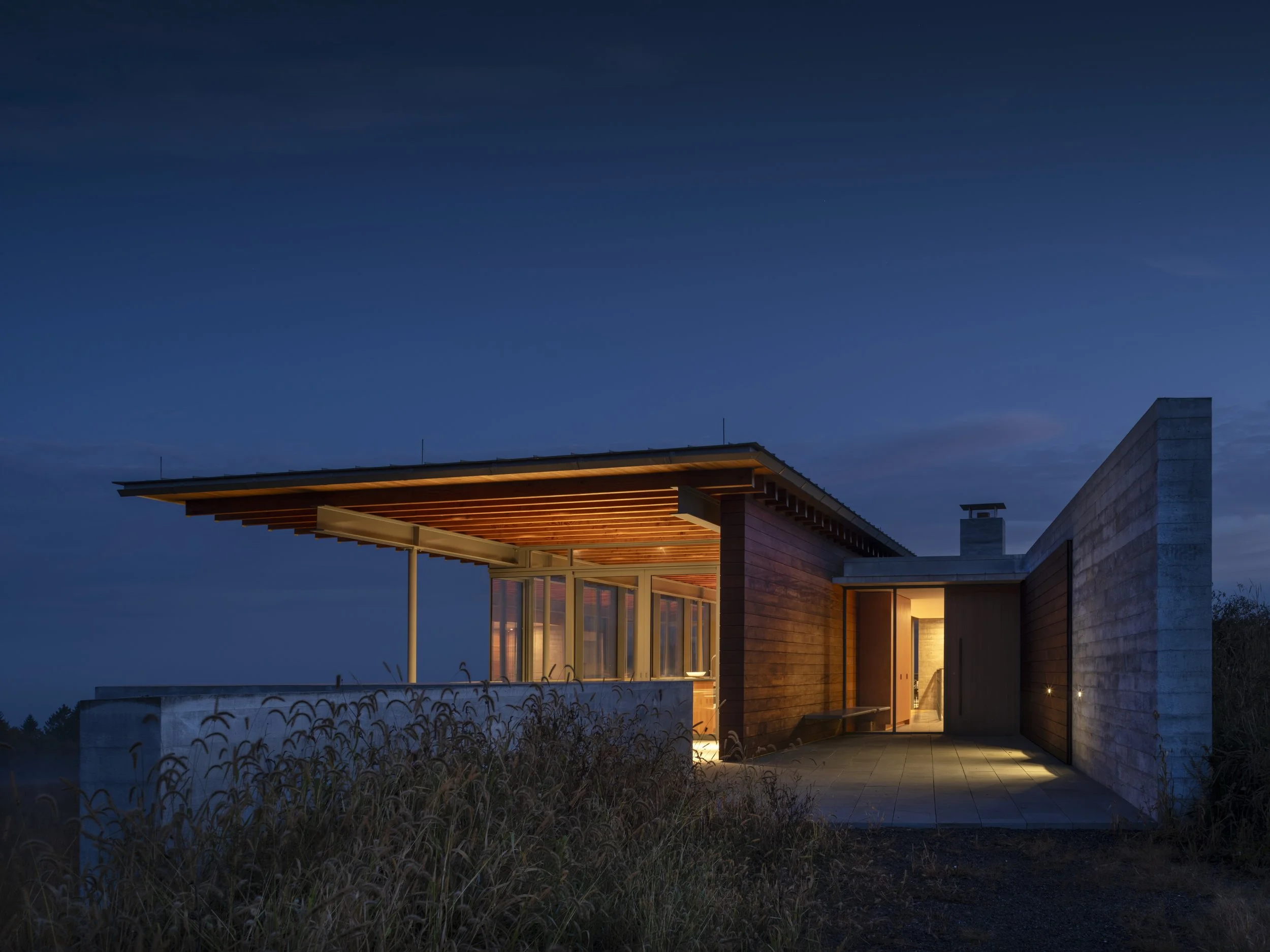







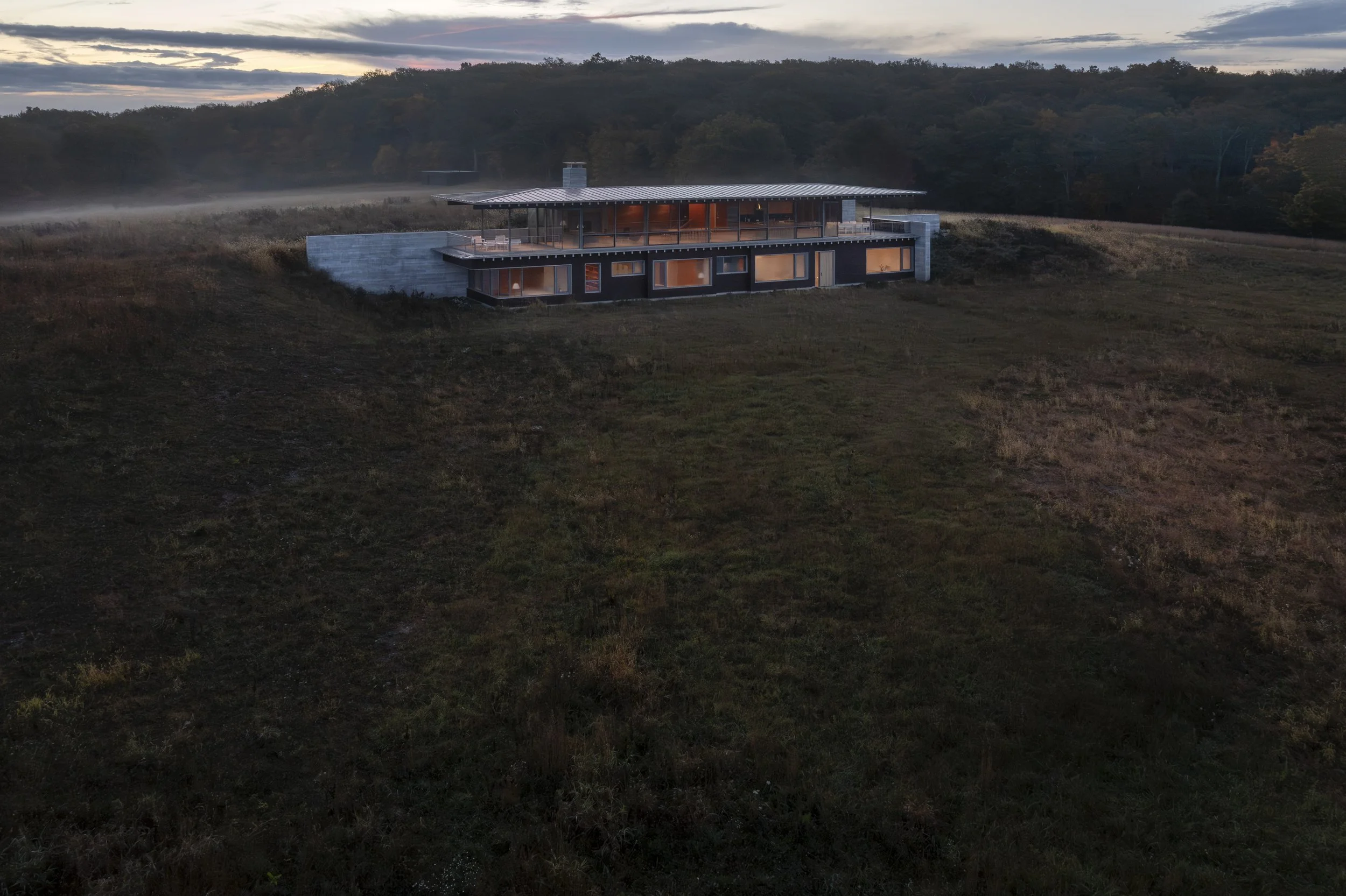
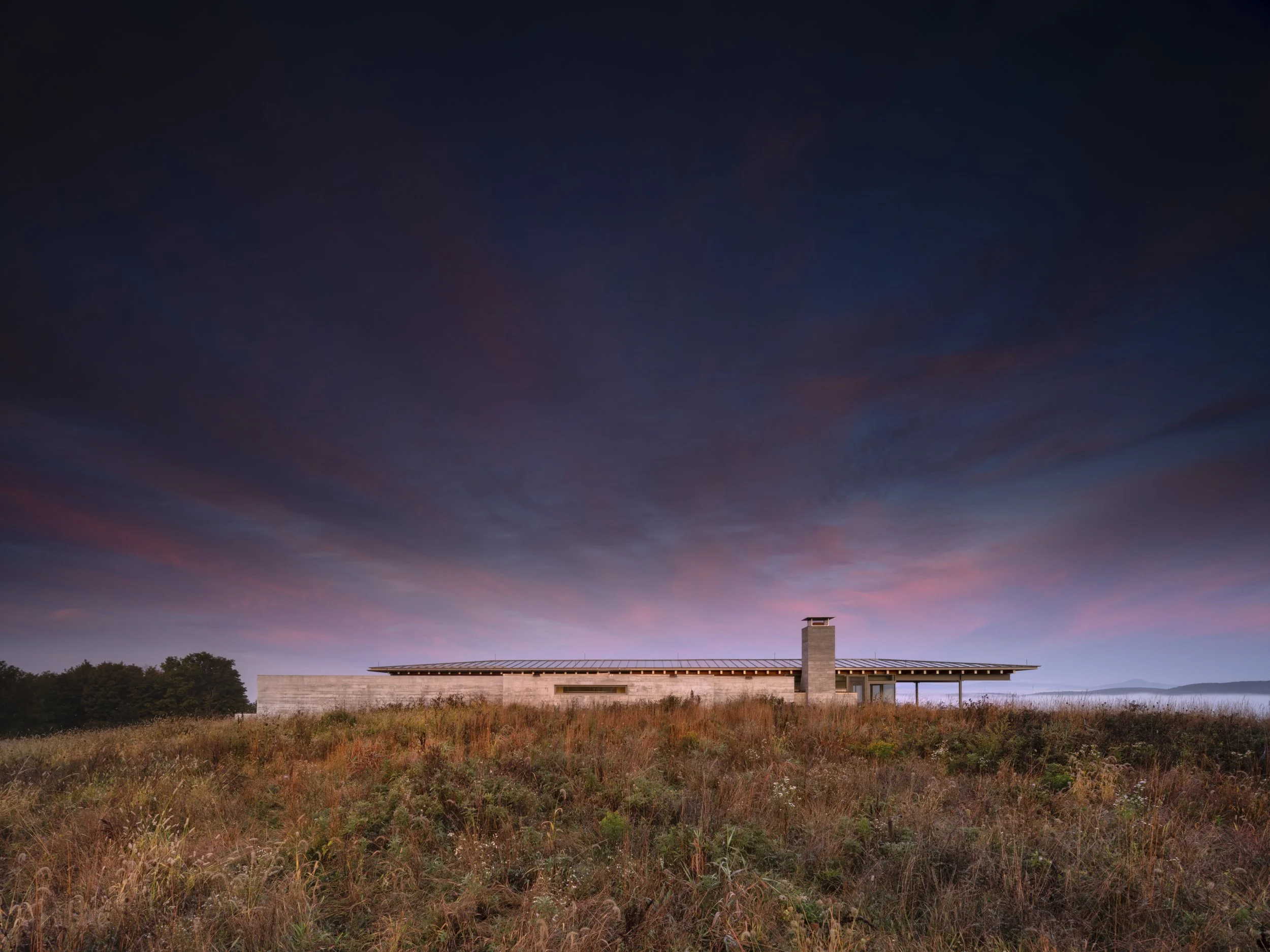

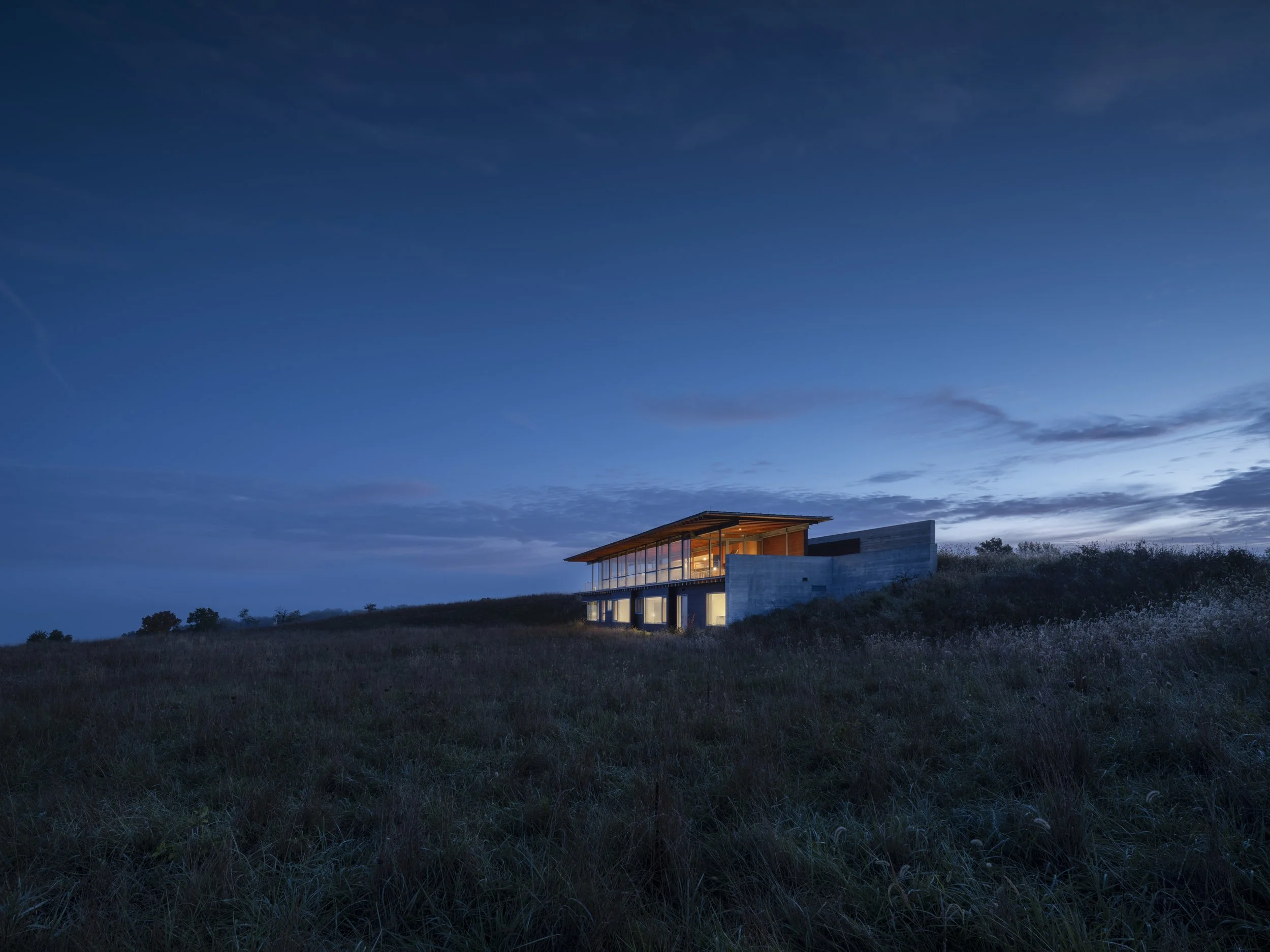
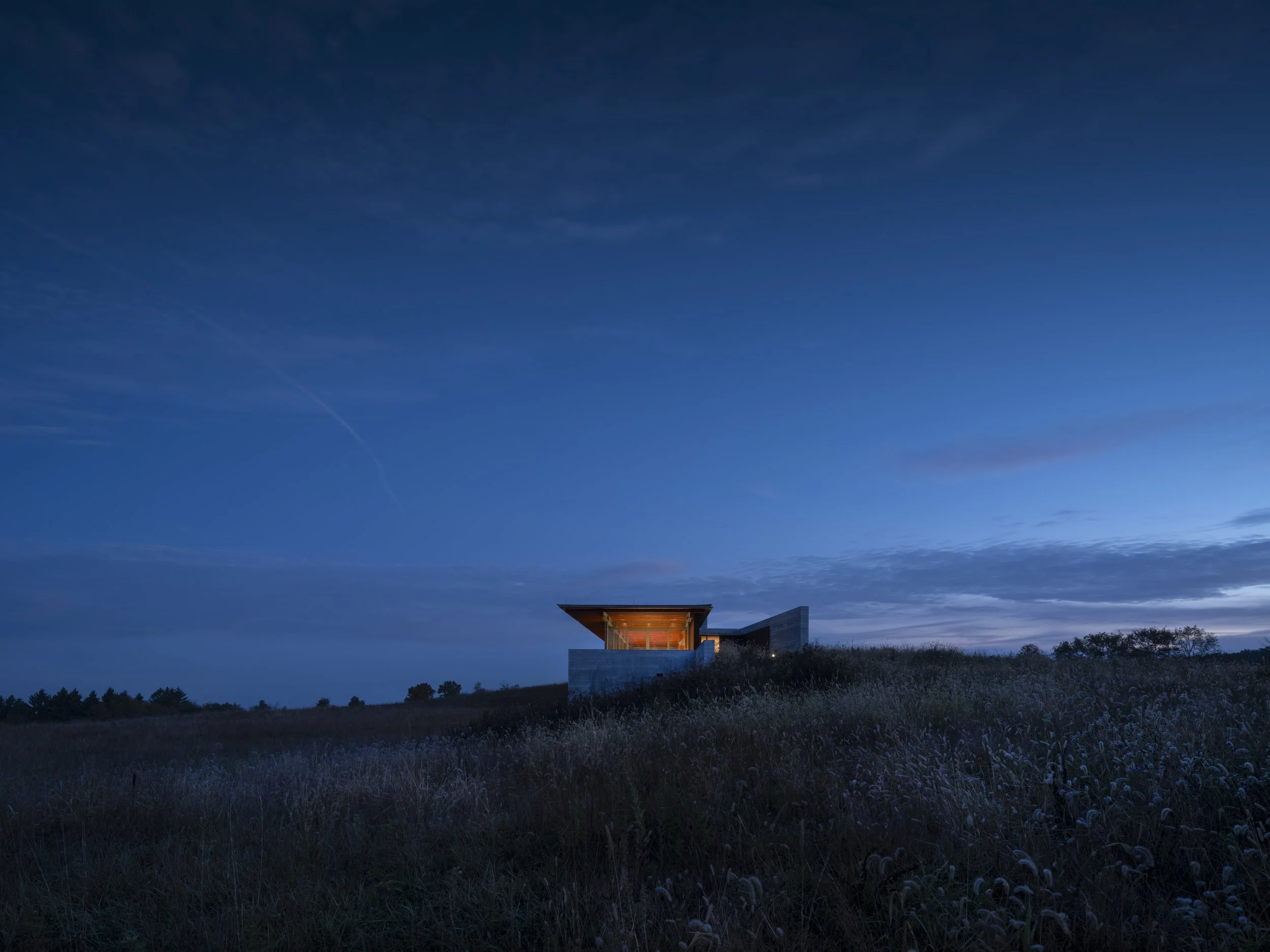
This project is the realization of AMA’s long-held architectural goal of designing healthy and sustainable homes. In early discussions with our client, a couple who had spent their careers in healthcare, we settled on the following spatial organization for the new home: 1) an upper level living space perched over the sloping site with views of the harbor and the Long Island Sound beyond, and 2) a two-story interior space suited for nurturing a growing tree. This atrium at the core of the house would serve as a “living” environment for reflection and recuperation and would be experienced throughout the two levels of the house both visually and acoustically with the accompanying sound of the atrium’s fountain.
While the building form is bold, the interior spaces are quiet, multi-functional, and edited. The home is compact, consumes little energy and requires minimal ongoing maintenance given the application of durable, weather-resistant materials. The exterior wall assembly is rigorously detailed for ultimate thermal performance made possible with four inches of exterior insulation along with triple-glazed windows and doors. An array of rooftop photovoltaics combined with heat pumps contribute to near zero-carbon emissions. The durable and sustainable cladding products are panelized with open joints that meticulously weave around the exterior of the house. A deep roof overhang and balcony wrap the east and south facades and provide solar shading. Additionally, the large windows are covered with aluminum louvers that diffuse direct sunlight and provide textural interest on both the outside and inside.
Every inch of the compact sloping site is put to use. The dimensions of the atrium space spill out into the landscape, designed by JDDA, with an outdoor pergola and forecourt animated with organic and curvilinear shapes of a Zen-garden, including raked shells, a topiary tree and rock formations. The covered entry walkway is lined with vine-growing louvers continuing the integration of plant material throughout and around the house. The house is sited high above the road and recessed into the hill with a stone base. Stairs crisscross the slope leading up to the outdoor living spaces and the raised gardens.
PHOTOGRAPHER:
The primary driver of this house’s design was the four distinct views it frames: a long mountain view to the west, a meadow view to the south, a farm view to the north, and a forest view to the east. With its U-shaped plan, the house forms three walls of a courtyard with the tree-line of the forest forming the fourth. The exterior is clad in cedar processed in the Shou Sugi Ban method, which chars the wood to protect against fire and the elements and results in a rich black color and scaly texture. Inside, the exposed framing is made of mass timber. The primary suite occupies the south volume of the house, with a long wing of social, entertaining, and dining spaces between it and the guest suite to the north.
To right-size the house for the couple, the four bedroom guest suite is physically separated from the rest of the spaces and acts as a standalone building. Though connected to the primary residence by the roof (and forming the south wall of the courtyard), the suite has its own entrance and can only be accessed by leaving the main wing. This allows for different scales of inhabitation and energy use: the couple can open the guest suite when hosting or take it offline when they are not.